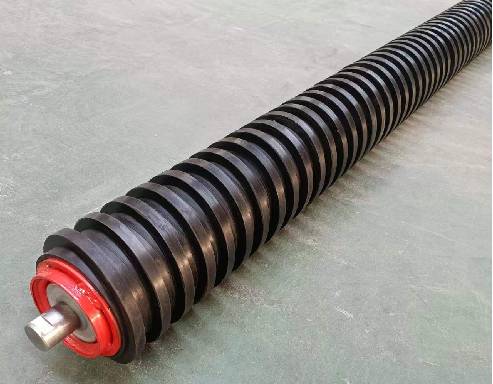 Afrikaans
Afrikaans  Albanian
Albanian  Amharic
Amharic  Arabic
Arabic  Armenian
Armenian  Azerbaijani
Azerbaijani  Basque
Basque  Belarusian
Belarusian  Bengali
Bengali  Bosnian
Bosnian  Bulgarian
Bulgarian  Catalan
Catalan  Cebuano
Cebuano  Corsican
Corsican  Croatian
Croatian  Czech
Czech  Danish
Danish  Dutch
Dutch  English
English  Esperanto
Esperanto  Estonian
Estonian  Finnish
Finnish  French
French  Frisian
Frisian  Galician
Galician  Georgian
Georgian  German
German  Greek
Greek  Gujarati
Gujarati  Haitian Creole
Haitian Creole  hausa
hausa  hawaiian
hawaiian  Hebrew
Hebrew  Hindi
Hindi  Miao
Miao  Hungarian
Hungarian  Icelandic
Icelandic  igbo
igbo  Indonesian
Indonesian  irish
irish  Italian
Italian  Japanese
Japanese  Javanese
Javanese  Kannada
Kannada  kazakh
kazakh  Khmer
Khmer  Rwandese
Rwandese  Korean
Korean  Kurdish
Kurdish  Kyrgyz
Kyrgyz  Lao
Lao  Latin
Latin  Latvian
Latvian  Lithuanian
Lithuanian  Luxembourgish
Luxembourgish  Macedonian
Macedonian  Malgashi
Malgashi  Malay
Malay  Malayalam
Malayalam  Maltese
Maltese  Maori
Maori  Marathi
Marathi  Mongolian
Mongolian  Myanmar
Myanmar  Nepali
Nepali  Norwegian
Norwegian  Norwegian
Norwegian  Occitan
Occitan  Pashto
Pashto  Persian
Persian  Polish
Polish  Portuguese
Portuguese  Punjabi
Punjabi  Romanian
Romanian  Russian
Russian  Samoan
Samoan  Scottish Gaelic
Scottish Gaelic  Serbian
Serbian  Sesotho
Sesotho  Shona
Shona  Sindhi
Sindhi  Sinhala
Sinhala  Slovak
Slovak  Slovenian
Slovenian  Somali
Somali  Spanish
Spanish  Sundanese
Sundanese  Swahili
Swahili  Swedish
Swedish  Tagalog
Tagalog  Tajik
Tajik  Tamil
Tamil  Tatar
Tatar  Telugu
Telugu  Thai
Thai  Turkish
Turkish  Turkmen
Turkmen  Ukrainian
Ukrainian  Urdu
Urdu  Uighur
Uighur  Uzbek
Uzbek  Vietnamese
Vietnamese  Welsh
Welsh  Bantu
Bantu  Yiddish
Yiddish  Yoruba
Yoruba  Zulu
Zulu belt conveyor parts and functions
Understanding Belt Conveyor Parts and Their Functions
Belt conveyors are crucial components in various industrial applications, providing an efficient means of transporting materials across several processes. They consist of several key parts, each performing specific functions that contribute to the overall operation of the conveyor system. This article aims to explore the essential components and their respective roles in a belt conveyor system.
1. Conveyor Belt
The most prominent part of a belt conveyor is, of course, the conveyor belt itself. Typically made from various materials such as rubber, PVC, and polyester, the belt serves the primary function of transporting goods from one point to another. The choice of material depends on the types of materials being conveyed, environmental conditions, and the nature of the application. The belt is designed to provide durability and flexibility, ensuring it can handle heavy loads and varying shapes of materials.
2. Pulleys
Pulleys are integral components that enable the movement of the conveyor belt. There are generally two types of pulleys drive pulleys and return pulleys. The drive pulley powers the belt and is typically located at the head of the conveyor, while the return pulley is positioned at the tail end, helping to guide the belt back to the drive pulley. Pulleys play a vital role in belt tension, ensuring that the belt runs smoothly and efficiently.
3. Idlers
Idlers, or rollers, are placed along the length of the conveyor belt to support it and keep it in alignment. They help minimize friction between the belt and its supporting surfaces, thereby reducing wear and tear on both the belt and the pulleys. Idlers come in various designs such as troughing, flat, and return rollers, each suited for specific applications. Proper functioning of idlers is crucial for maintaining the longevity of the conveyor system.
belt conveyor parts and functions

4. Drives
The drive system of a belt conveyor consists of a motor and a gear system, which provides the necessary power to move the belt. The motor turns the drive pulley, initiating the belt's movement. Drive systems can vary widely depending on the size and complexity of the conveyor, with options ranging from electric motors to hydraulic systems. Selecting the appropriate drive configuration is essential for efficiency and performance.
Tension is critical in a belt conveyor system, as it ensures that the belt remains taut and minimizes slippage. Tensioning devices, such as screw or hydraulic tensioners, are employed to adjust the belt's tension as needed. Proper tensioning prevents excessive wear on the belt and components, leading to a more reliable and sustainable operation.
6. Safety Devices
Safety is paramount in industrial environments. Various safety devices are incorporated into belt conveyor systems, including emergency stop buttons, safety guards, and belt misalignment detectors. These features help to mitigate risks associated with conveyor operation and protect both workers and equipment.
In conclusion, a belt conveyor system comprises various parts, each contributing to the overall efficiency and functionality of material transport. Understanding these components, such as the conveyor belt, pulleys, idlers, drives, tensioning devices, and safety mechanisms, is essential for effective operation and maintenance in any industrial setting.
-
Revolutionizing Conveyor Reliability with Advanced Rubber Lagging PulleysNewsJul.22,2025
-
Powering Precision and Durability with Expert Manufacturers of Conveyor ComponentsNewsJul.22,2025
-
Optimizing Conveyor Systems with Advanced Conveyor AccessoriesNewsJul.22,2025
-
Maximize Conveyor Efficiency with Quality Conveyor Idler PulleysNewsJul.22,2025
-
Future-Proof Your Conveyor System with High-Performance Polyurethane RollerNewsJul.22,2025
-
Driving Efficiency Forward with Quality Idlers and RollersNewsJul.22,2025





























